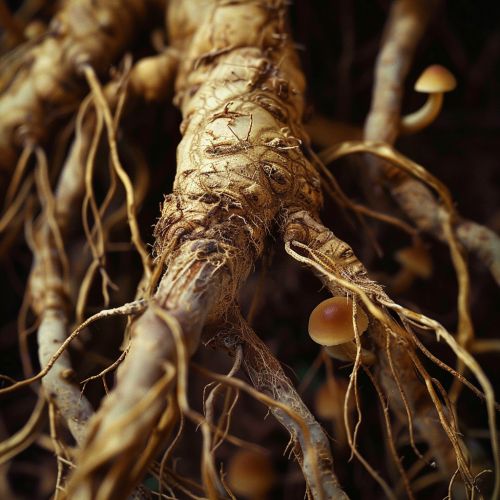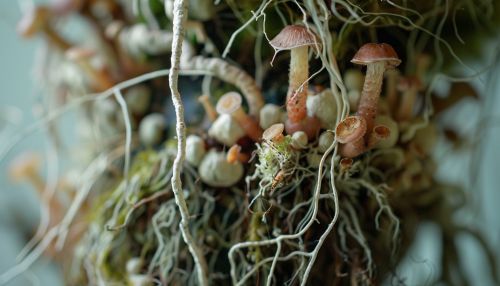Mycorrhizae
Introduction
Mycorrhizae are a type of symbiotic relationship that exists between fungi and the roots of plants. The term "mycorrhiza" comes from the Greek words "mykes" meaning fungus and "rhiza" meaning root. This relationship is crucial for the survival and growth of many plant species, as the fungi provide the plants with essential nutrients, while the plants provide the fungi with carbohydrates.


Types of Mycorrhizae
Mycorrhizae are classified into two main types: ectomycorrhizae and endomycorrhizae.
Ectomycorrhizae
Ectomycorrhizal fungi form a sheath around the root tips of the host plant, with the fungal hyphae extending into the soil. This sheath increases the surface area for nutrient absorption. Ectomycorrhizae are typically associated with tree species in temperate and boreal forests, such as pines and oaks.
Endomycorrhizae
Endomycorrhizal fungi penetrate the root cells of the host plant, forming highly branched structures known as arbuscules. These arbuscules facilitate the exchange of nutrients between the plant and the fungus. Endomycorrhizae are the most common type of mycorrhiza and are found in approximately 80% of plant species, including many crop plants.
Function and Importance of Mycorrhizae
Mycorrhizae play a crucial role in nutrient cycling within ecosystems. They enhance the ability of plants to absorb water and nutrients, particularly phosphorus and nitrogen, from the soil. This symbiotic relationship also increases plant resistance to diseases, drought, and heavy metal toxicity.
Mycorrhizae and Plant Diversity
Mycorrhizae contribute to plant diversity by influencing the competition among plant species. They can alter the balance of nutrients available to different plants, thereby affecting their growth and survival. Some studies suggest that mycorrhizae may even play a role in plant speciation.
Mycorrhizae in Agriculture
The use of mycorrhizal fungi in agriculture can improve crop yield and reduce the need for chemical fertilizers. Mycorrhizae enhance nutrient uptake, improve soil structure, and increase plant resistance to pests and diseases. However, the effectiveness of mycorrhizal inoculation in agriculture depends on various factors, including the type of crop, the mycorrhizal species used, and the soil conditions.
